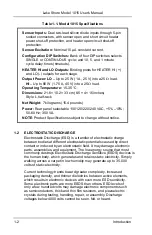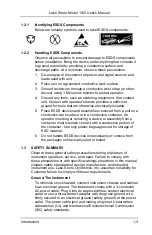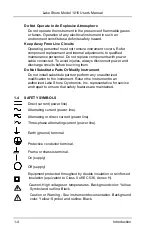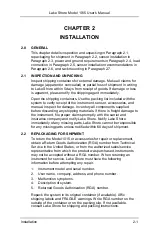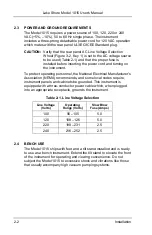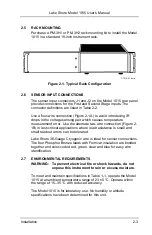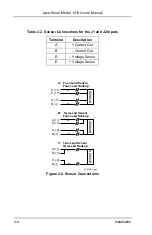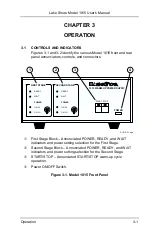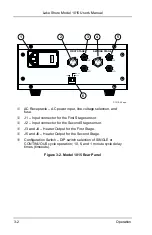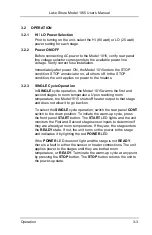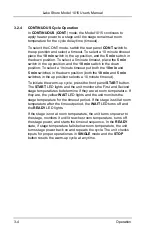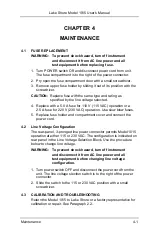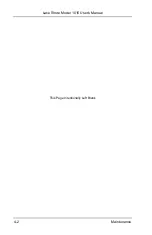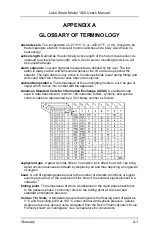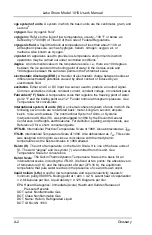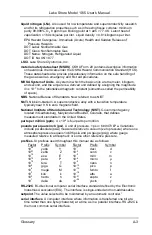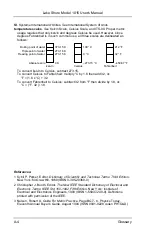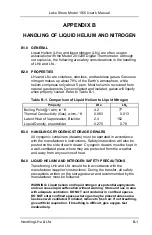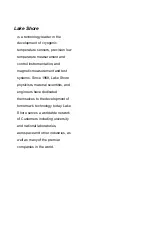
Lake Shore Model 1015 User’s Manual
A-2
Glossary
cgs system of units
. A system in which the basic units are the centimeter, gram, and
second.
2
cryogen
.
See
cryogenic fluid.
1
cryogenic
. Refers to the field of low temperatures, usually –130 °F or below, as
defined by 173.300(f) of Title 49 of the Code of Federal Regulations.
cryogenic fluid
. A liquid that boils at temperatures of less than about 110 K at
atmospheric pressure, such as hydrogen, helium, nitrogen, oxygen, air, or
methane. Also known as cryogen.
1
cryostat
. An apparatus used to provide low-temperature environments in which
operations may be carried out under controlled conditions.
1
degree
. An incremental value in the temperature scale, i.e., there are 100 degrees
between the ice point and the boiling point of water in the Celsius scale and
180 degrees between the same two points in the Fahrenheit scale.
electrostatic discharge (ESD)
. A transfer of electrostatic charge between bodies at
different electrostatic potentials caused by direct contact or induced by an
electrostatic field.
excitation
. Either an AC or DC input to a sensor used to produce an output signal.
Common excitations include: constant current, constant voltage, or constant power.
Fahrenheit (°F) Scale
. A temperature scale that registers the freezing point of water
as 32 °F and the boiling point as 212 °F under normal atmospheric pressure.
See
Temperature for conversions.
international system of units (SI)
. A universal coherent system of units in which the
following seven units are considered basic: meter, kilogram, second, ampere,
kelvin, mole, and candela. The International System of Units, or Système
International d'Unités (SI), was promulgated in 1960 by the Eleventh General
Conference on Weights and Measures. For definition, spelling, and protocols,
see
Reference 3 for a short, convenient guide.
IPTS-68
. International Practical Temperature Scale of 1968. Also abbreviated as
T
68.
ITS-90.
International Temperature Scale of 1990. Also abbreviated as
T
90
. This scale
was designed to bring into as close a coincidence with thermodynamic
temperatures as the best estimates in 1989 allowed.
Kelvin (K)
. The unit of temperature on the Kelvin Scale. It is one of the base units of
SI. The word “degree” and its symbol (°) are omitted from this unit.
See
Temperature Scale for conversions.
Kelvin Scale
. The Kelvin Thermodynamic Temperature Scale is the basis for all
international scales, including the ITS-90. It is fixed at two points: the absolute zero
of temperature (0 K), and the triple point of water (273.16 K), the equilibrium
temperature that pure water reaches in the presence of ice and its own vapor.
liquid helium (LHe)
. Used for low temperature and superconductivity research:
minimum purity 99.998%. Boiling point at 1 atm = 4.2 K. Latent heat of vaporization
= 2.6 kilojoules per liter. Liquid density = 0.125 kilograms per liter.
EPA Hazard Categories: Immediate (Acute) Health and Sudden Release of
Pressure Hazards
DOT Label: Nonflammable Gas
DOT Class: Nonflammable Gas
DOT Name: Helium, Refrigerated Liquid
DOT ID No: UN 1963
Содержание 1015
Страница 18: ...Lake Shore Model 1015 User s Manual 4 2 Maintenance This Page Intentionally Left Blank ...
Страница 25: ... NOTES ...

